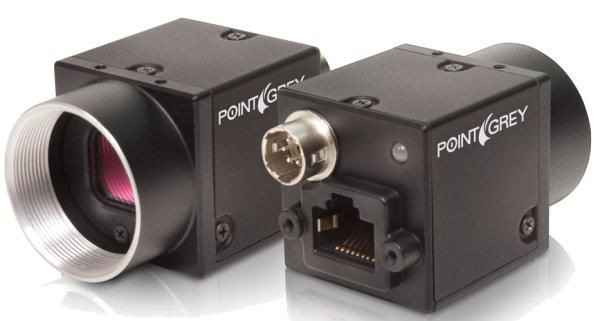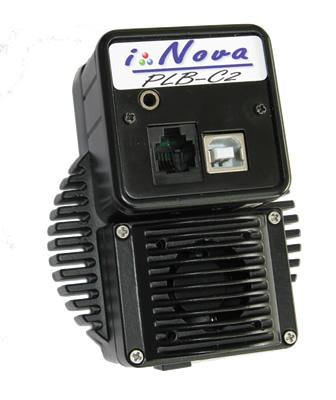Solar System imaging cameras of 2015 - winners, announcements and new cameras
We now have 2015 so it's time to have a look at the Solar System imaging market. What changed since 2014, which cameras turned out to be great and what will the future brings?
Change of technology - CCD is being replaced by CMOS
Not so long ago Sony announced discontinuation of CCD sensors in favor for CMOS. Those CCD sensors will be still present in the upcoming years, but we won't get any new CCDs and existing will start showing up less and less frequently. A less flexible technology is being replaced with a better one - CMOS. Few years ago we didn't even looked at CMOS for planetary imaging.
The Sony announcement was made in the time when their CMOS IMX174 (and IMX249) sensors were getting quite positive feedback from end users. High framerate, good sensitivity, low noise and what's most important - no fixed pattern noise problem (which can spoil some images taken with ASI120, QHY5L-II or alike with Micron/Aptina sensors).
Since 2014 the Micron/Aptina cameras like QHY5L-II, ASI120 or Skyris 132M and alike are dominant force on the Solar System imaging market. However some users start to migrate to Sony IMX sensors. The switch won't be big at the moment as the IMX174 is much more expensive. Among entry level cameras like ASI034 or NexImage 5 CMOS is also dominant (although quality may not always be sufficient for it price). As you can see in general Solar System imaging have already switched from CCD to CMOS. Some CCD cameras are still used and will be in the upcoming years, but most if not all future planetary cameras will be CMOS based. There are some like Sharp that try to fill in the CCD gap but it's hard to tell if they will be able to provide as good sensors as dynamically evolving CMOS market. Solar imaging likes Sony CCDs for their low noise and no FPN or Newton rings problems, that the Micron CMOS sensors have, but also among solar photographers new Sony IMX sensors are starting to win.
In the upcoming years DS imaging cameras will have to start switching to CMOS too, at least in some part. It will be interesting to see what will be the outcome of that change - in terms of price and performance. Most new sensors have usually small pixels which isn't the best thing for DS imaging. Solar System imaging on the other hand likes new sensors, the performance is good or best
and the prices are also low / lower than when CCD ruled.

Rise of te Sony CMOS sensors
As I mentioned some Sony CMOS sensors are slowly taking over the planetary imaging market. Current models with IMX174 or even IMX249 are more expensive than QHY/ASI Micron cameras so there won't a total and global switch. However there is always a chance that even cheaper sensors will show up allowing vendors to create successors of current Micron/Aptina models with the improvements available in Sony Pergius shuttered CMOS sensors - not problem with FPN, high framerate, good sensitivity and low noise.
IMX174 first debuted in Point Grey Grasshopper 3 camera. It was tested by some photographers and even with not very high gain levels available it got quite positive reviews. Some started using it for imaging planets, and some for solar H-alpha imaging. High price prevents wider adoption of those cameras.
ZWO ASI174 was the second camera with this Sony sensor. It's slightly cheaper than Grasshopper and it's more easily available. Some users complain on USB controller compatibility with this camera, but even so it got very good reviews and people like it very much.
When IMX174 was a hot topic Sony released IMX249 sensor, that in general is slower but much cheaper clone of IMX174. This sensor showed up in one of Point Grey Blackfly cameras with GigE interface for around half of the Grasshopper price. This camera isn't yet widespread, but those who got it also like it and can't complain on it performance.
So if you are looking for a good imaging camera - for Sun or in general for Solar System imaging then those IMX sensors are a very good choices.

Local brands rule the local markets
During FireCapture development Torsten decided to add new cameras to the supported list. There was a voting on the discussion list and it turned out that the winners are two local brands, and not another global machine vision camera maker.
The first winner is Mallincam from North America. This company is offering advanced (and expensive) CCTV cameras for live video-astronomy. Recently they also started reselling Tucsen laboratory and alike cameras (which is done by Opticstar too). One of their cameras is Mallincam SSI, which is a Tucsen Discovery USB2 camera with IMX035 Sony sensor. Although the camera isn't cheaper than ASI/QHY, nor does it have the best sensor it got a lot of votes for FireCapture support. If the current Discovery model doesn't have fixes for the issues I found when testing it then it lifespan will be rather short. The IMX035 also didn't caught any noticeable attention when it first appeared. There were some users but the sensor wasn't particularly better than others. And IMX035 is not a real sCMOS sensor. Tucsen (and Rolera) tried such trick and not it seems they don't use the term sCMOS
(but resellers still do).
Second winner were French iNova cameras, that are expanding to other markets (like USA), and have some interesting new features like an Peltier cooled housing. You can pick on of few models. Some have CCDs like ICX618, and there is one QHY5L-II/ASI120MM counterpart. The Peltier cooled versions is almost twice as expensive as those two cameras, but - it's cooled.
It's hard to tell how much cooling is needed for planetary cameras. Cooling allows it to be used for DS imaging, but that very often needs a guider so using a planetary camera as a DS camera + similar camera as a guider gives some sort of a usage conflict (plus those sensors are small). For methane or ultraviolet band imaging cooling may help as at longer exposures and very high gain even small amount of dark current can expose hot pixels or FPN which then can spoil the image or lower it end quality.

Lets try to make a cooled planetary camera
iNova aren't the only cooled planetary cameras out there. QHY announced miniCAM5S camera which should be a cooled variant of QHY5L-II. Since the announcement nothing much have changed. It will allow cooling around 30 degrees below ambient and that's about it. We don't know the prices, release date, software support or even if there will be other models with newer sensors. Cooling a Micron sensors seems like a partial solution when we can get IMX sensor that at start has less noise and nearly no FPN.

We didn't had any good planetary camera with cooling, so it's hard to tell if it's needed or at least handy to have. There was cooled QHY IMG0H, but it appeared late on the market and the initial reviews were mixed. Maybe 2015 will bring us such camera? That would answer some questions and if it would work could improve some more challenging imaging of Uranus, Neptune or narrowband planetary imaging in UV, methane and other bands.
A comparison of sensors available on the market
Point Grey recently published an updated CCD/CMOS sensors comparison used in their cameras. We can check quantum efficiency, noise and other factors affecting camera performance. Note that Point Grey compared camera models and not just sensors so in some tests one sensor may show up multiple times with different results.
The most interesting is the absolute sensitivity threshold
chart which takes sensor sensitivity as well as noise into account. So to get best (lowest) score the camera must have low noise and high sensitivity.

IMX174 has one of the best results, also AR0134 (variant of the sensors used in QHY5L-II/ASI120 but with global shutter) is high on the list. IMX035 is high, yet it's not a popular sensor. First CCD is on fift place and it's a Sharp CCD. Popular ICX445 got a good score, but not as good as the top sensors. According to this chart CMOS can easily perform better than CCD.
IMX249 in a Blackfly camera got surprisingly worse results than IMX174. It has higher QE but also higher noise according to PGR measurements.
In the end
We didn't had any hot new sensors announced very recently. IMX174/249 are selling and it looks like the end of 2015 will bring some new interesting sensors that will be able to stand up into the planetary imaging battle. Solar System camera market evolves very quickly and every few months there maybe a totally new camera or sensor released.
Comment article